External Impacts: Fire
Mills that were caught up in the roller milling revolution were affected by more than just internal changes. External events, such as war or the constant issue of fire, affected roller mills and the roller milling industry throughout the end of the 19th century and the 20th century. Read on to learn about how these external impacts affected mills and individuals from the time.
Mill fires
October, 1886: After a hard day at work you are asleep in your bed, the chill of the autumn day is negated under your blanket. Suddenly you are awakened. You have heard something that causes a chill to go down your spine…the cry of ‘Fire’. You jump out of bed and rush to the window to see a deep red glow emanating out of the nearby mill. There is no time to think, you rush out of the house and cross the road to help in any way you can.
This was the situation that ‘A Spectator’ found himself in when Mr Farrington’s Ellers Corn Mill, in Ulverston, historically in Lancashire, caught fire on Monday 11 October 1886. This particular mill had ‘recently been fitted with new machinery of the most modern type’, in all likelihood, roller machinery. The fire destroyed the roof which collapsed and destroyed the floor below. The machinery all ended up in a sorry mix and damage to the stock and machinery was put at £3000, whilst to the building itself, the damage was estimated at £1000. This was partly covered by insurance but Mr Farrington would have still found himself needing to layout more money to rebuild.
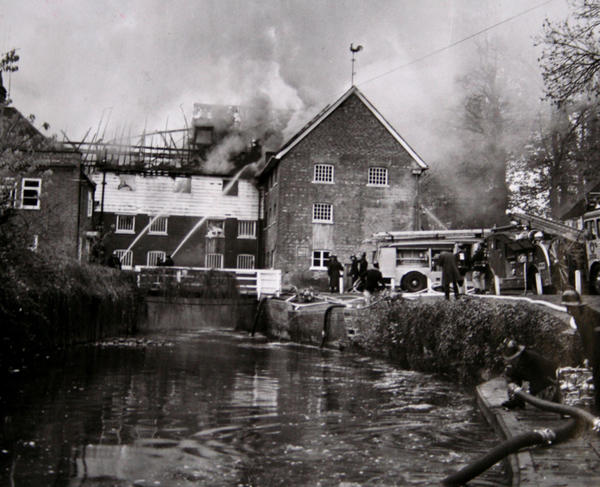
Unfortunately, this situation had been common for millers for hundreds of years. The introduction of roller machinery at the end of the 19th century did nothing to lessen this danger. In fact, fire could often be more catastrophic as if one started, it more than likely would destroy the whole mill. The reasons for this cannot be described any better than how Voller described it in his textbook for Modern Flour Milling: ‘every one who is acquainted with modern mills must have noticed how favourable are the conditions for spreading fire. If working, there is plenty of rapidly moving machinery, while reaching from floor to floor are elevators and belts, all adapted to extend the fire. Dry wood abounds; oil and grease from bearings add to the inflammability of the structure. The covers of dressing and purifying machines augment the danger. Hence it need not surprise us to know that the flames travel as by magic’ (Voller, p.433-434).
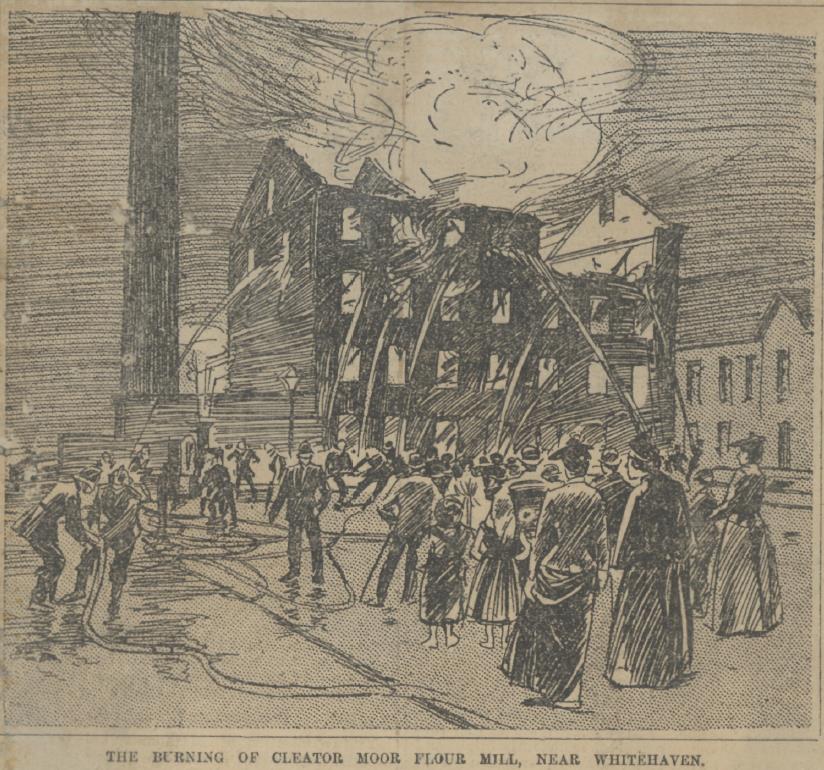
So, the fires once started could spread like wildfire and could be deadly. Reports of death, whilst not necessarily frequent, were not that rare either. The report of the fire at Cleator Moor Flour Mill near Whitehaven, whilst short, did contain the fact that ‘One man lost his life by falling twenty feet from a ladder while attending to a hose’. Fighting the fire could be just as perilous making ‘A Spectator’s’ actions even more remarkable when he and others rushed into the mill building armed only with buckets to put the fire out…
The fires themselves could be caused by any number of things. The most common was from the machinery when friction built up, causing sparks, or when they overheated. Dust explosions were also very common, as were careless use of lights, making the possibility of a conflagration a high probability. This meant that as the roller milling industry grew, so did the fires.
In a study done into the number of reports of fires in The Northwestern Miller over a 60 year period, this growth in the number of fires as the roller milling industry grew can be seen. Random editions were picked at ten year intervals, starting in 1879 and ending in 1939, and the number of reports of fires were counted. There were 9 reports of fires in the 1879 edition compared to 20 in 1889. In 1899 there were only 10 reports, a decline from 1889, and this decline would continue, despite a slight increase in 1929, throughout the beginning of the 20th century. This decline in reports would suggest that the number of fires decreased and the reason for this decrease was, in all probability, due to better prevention methods.
There were numerous ways to help prevent fire. Returning to Voller, he states nine different ways to help prevent or quickly deal with fires:
- Build mills with fireproof or slow burning material.
- A water main with a hose fixed should be placed on every floor.
- The water should always be on.
- Appliances should be regularly tested by a fire brigade officer.
- The premises should be closely examined after machinery have stopped working for the night.
- Naked lights should not be allowed.
- The milling department should be separated from other sections by a dividing wall.
- Every precaution should be adopted to prevent fire, not just one or two.
- All mills should be equipped with sprinklers.
Fire is not picky. It would as likely destroy a small independent mill, such as Ellers Corn Mill, as a huge company owned mill, such as Rank Atlantic Flour Mill, Barry Dock. It could cause the £4000 worth of damage Mr. Farrington had to deal with or the £15,000 – 20,000 damage Joseph Rank had to deal with after the 1912 Atlantic Flour Mill fire in Cardiff. It did not matter who you were, fire would destroy which is why prevention was so important.
If prevention methods had not been implemented or they failed and a mill did burn down, it was not necessarily the end for that mill. In many instances the mill was rebuilt. Mr Farrington, from the first example, appears to have been successful in rebuilding his mill, despite only having partial insurance. In other instances, mills may not be rebuilt but again this did not necessarily mean the end. When Waltham Abbey Mill, Essex, was destroyed by fire on Christmas Eve 1888 it was not rebuilt. This occasion was one described by William Cornwell as a ‘blessing in disguise’. The mill was ‘not in a good position commercially’, being 1½ miles away from the railway station and 1 mile from the canal, so its destruction by fire made the decision to purchase a new site, closer to transport links, much easier (Cornwell, p.2).
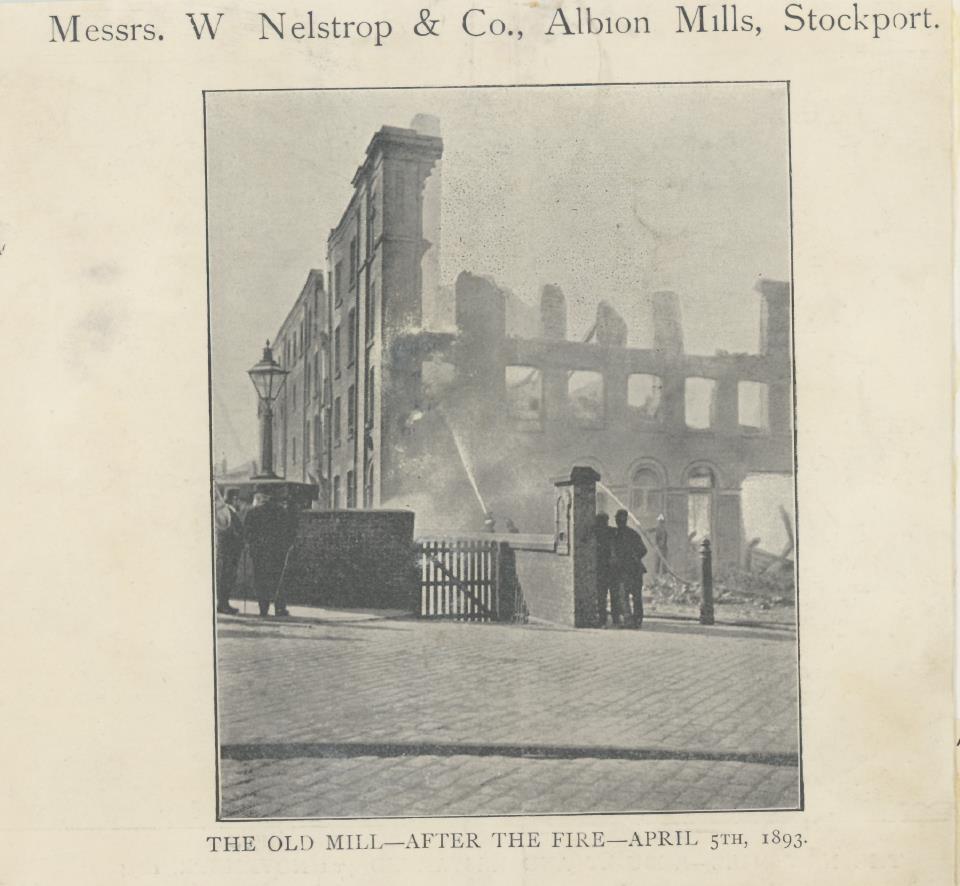
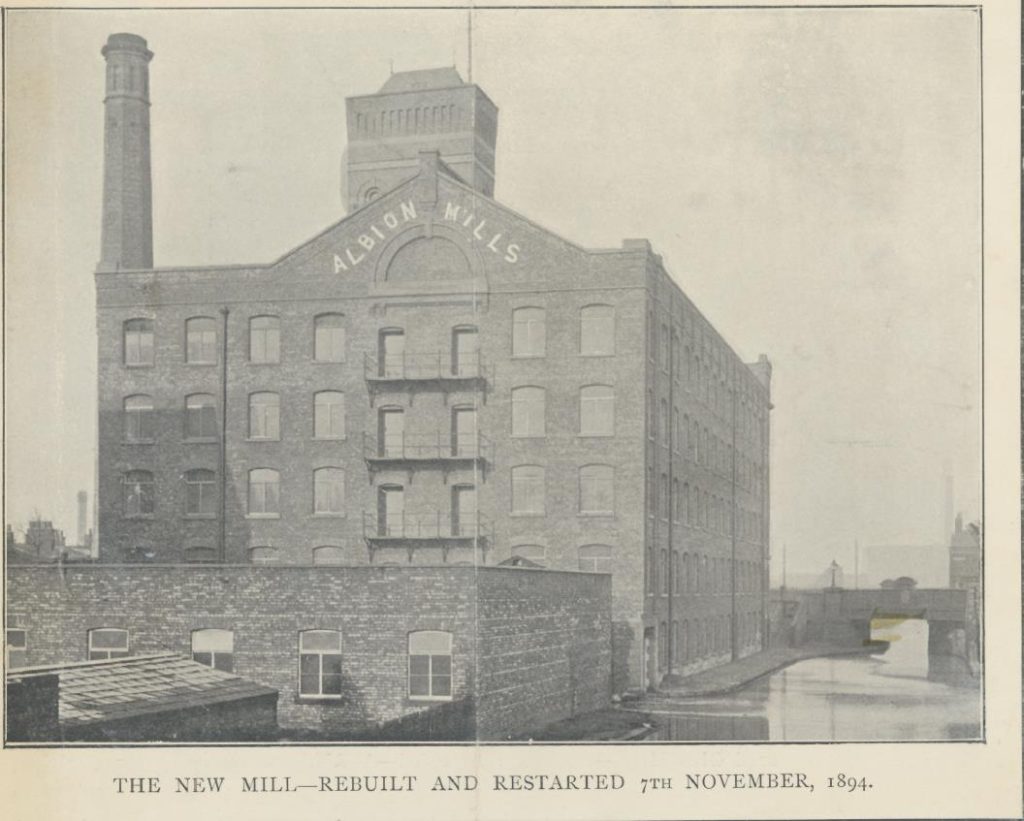
Mills could be rebuilt or moved, but either way, they still promised a future. The example here of Albion Mills, Stockport, showing it post fire and after being rebuilt reflects this. The new building stands tall, with the words “Albion Mills” proudly displayed. It may have taken more than a year but the sorry sight of the gutted mill in the other picture could finally be forgotten, life could continue and those who had suddenly found themselves out of a job, through no fault of their own, could return to work. Fires, therefore, did not necessarily mean the end. For some it did but for others, they could rally, rebuild (or relocate) and restart, just like in life.
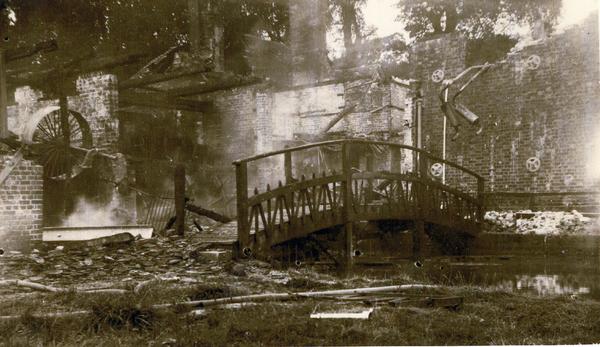
So fires and fire prevention were part of everyday life for those who worked in a roller mill, or even for those who lived nearby, bringing us back to ‘A Spectator’s’ story. After rushing across the road to assist in the firefighting, he had entered the mill, along with others, armed with buckets determined to extinguish the fire. They were soon sent out again like ‘drowned rats’ to watch the fire be extinguished by the firefighters with the hoses, whilst hopefully not catching hypothermia at the same time. Unfortunately it took hours for the fire to finally be extinguished, with much blame for this being placed with one Mr Swan, the head man of the fire brigade. He appears to have been conspicuous for not joining in and this spectator hoped that the ‘next time we will have the pleasure of seeing him with his shirt sleeves rolled up, hose in hand, on the very highest pinnacle as becomes a head man of a fire brigade, and not standing with his fingers in his mouth’.
Sources:
Cornwell, William, A Short Survey of the Sun Company (1926): CORN-08.
Soulby’s Ulverston Advertiser, 14th October 1886, taken from Duffield:4.
The Miller, 30 January 1892, taken from Duffield:57.
Voller, William R., Modern Flour Milling (Gloucester, 1897).
